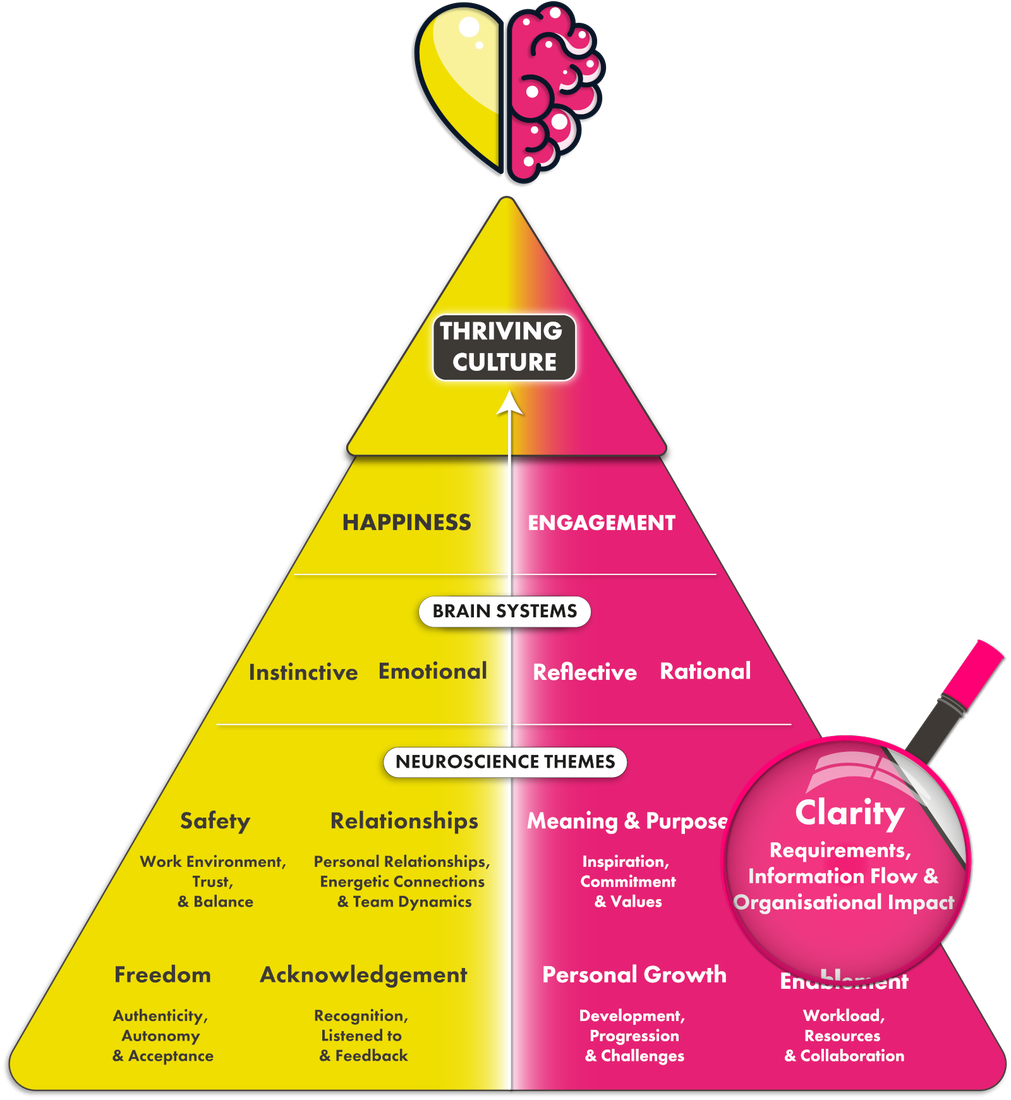Menu


Having access to the right information at work can be linked to employee engagement. Information flow is associated with the Rational brain system in our neuroscience model.
If you’ve just landed here, we recommend heading over to our brain systems and neuroscience themes pages for an introduction to our neuroscience model and methodology. Otherwise, read on to find out why information flow is a vital component for workplace engagement.

Information within a company is a broader topic than just revenue, costs, and accounting terms. It’s interpreting the mission or vision and making those intangible things mean something so they become explicit. But information flow can easily be forgotten. The importance of how information is exchanged throughout an organisation should be a top priority. It’s how people understand the why behind the work as well as the transactional side of the business.

Often, people spend a lot of time and energy looking for data. As a leader, you can’t know everything. You will not always know what your people are doing, so be very explicit upfront. As you scale and become a larger organisation, it’s less about content and more about how to navigate. Have a consistent structure and pathways to access information.
The key is how you define importance, which is purely contextual. Today, it might not be important, but tomorrow, it is. For instance, it could be precious information if I gave you next week’s winning lottery numbers today. But if I give you last year’s winning lottery numbers, it’s meaningless, but it’s still the same information. What’s important to you in a given moment might not necessarily be important later. The importance is dependent on how the information enables other aspects of the organisation, such as a process, transaction, communication, or facilitating an agreement. It boils down to why you need to know the information and how you receive it.
In the current economic environment, many have been affected by mass layoffs and inflation; it’s easy to believe people feel emotional. But what are they demanding? Leaders need to find ways to change the story their people receive to one that satisfies them rather than being simply transactional. Just because your people are asking for facts and details doesn’t mean this is the right solution. You believe you are being very transparent by just giving the facts, but what’s more important is consistency. Be predictable when it comes to the fundamentals of your working relationships and transactions. This helps people know what’s next, and that is what leads to transparency. This branches out into an element of trust and enables an engaging dialogue around what is fair because it means different things to different people.
Having clarity is very important when we are dealing with information. If people feel they need more clarity on the information, you need to understand why it’s lacking. Can they access the information? Do they trust the information or understand the why behind the data? Find out where the problem is. It could be you have all the information, but no one knows about it, which is an activation and communication issue. If you’ve got the proper framework, but all your content needs to be updated, corrected, and irrelevant, it’s a different issue. You have to trace the symptom before you can find the solution. But sometimes, identifying the root problem doesn’t mean fixing it. Sometimes it means parking the process because what worked in the past no longer works.
Design a process with intention by using the information to support recognition. For instance, a CEO, in addition to bonuses, wanted to thank and recognise his people. He took the time to figure out what they enjoyed. One got football tickets because they’re really into football. One was a bike enthusiast, so they invested in bike parts for him. Another had a passion for wine, so they sourced a bottle of wine from the place and year of his birth. These things were special, touching, and truly meaningful to the individual. It takes little effort to get to know people, especially when you spend 40-plus hours a week with them. There’s no excuse not to do it. Again it comes down to intention and optimising information using logic to derive something heartfelt. Using logic to engage people to create an emotional reaction. That’s what good leaders do with information.
Some information is intrinsic. People just know it. While other times information is explicit, so it’s captured and stored. No matter how information is stored, be sure it’s interoperable. Futureproof your information. Imagine if Adobe charged a thousand euros per PDF. What if Microsoft started charging each time you open a document? Be aware of accessibility, especially when you don’t control the medium your information is stored on. Don’t find yourself in a situation where you have the information, you can make it flow, but it can’t drive utility because no one can gain access. Don’t go down with the router. Store your information in an accessible way and back it up. Systems fail, programs change- don’t lose your data because of a technical issue.
Information affects the design and outcome when certain factors are a play. For example, if you use a professional external recruiter with the best candidates, but no one accepts your job, where is the breakdown? Is it because you didn’t interview well or failed to get back to the candidate in time? It’s unfair to judge the recruiter by factors beyond their control. Examine the steps in the process and the information associated with the amount of control you have over the outcome versus trying to influence an outcome. Intent becomes the fine line between influencing and manipulating. Are you simply trying to influence stakeholders, or are you advancing your own agenda by trying to manipulate the outcome? Both use the same data. The only difference is your agenda and tone; it’s the context that truly comes into play.
Successful information flow happens when people connect to the story behind the products and services. It’s about seeing your affinity for your company and colleagues come to life. For example, if you work in the banking industry, helping small businesses access loans, then take a walk and see one of those businesses you feel you’ve contributed to. You know the story behind the company because the information connects you to the outcome. The information allows you to form connections between the journey and the outcome. It creates an affinity and an association with the project, client, or customer.
*This is an excerpt from the Happiness and Humans Podcast with Steve Bianchi, Chief People Officer at ECARX. Click here to listen to the full podcast.
Related articles
Get in touch for a quick chat with one of our experts to see how we can help you.
Take our benchmark to map where your organisation is now, and where it needs to be.